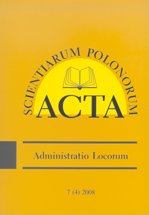Rybactwo śródlądowe – rolnicza i pozarolnicza forma zagospodarowania obszarów wiejskich
Inland fisheries – agricultural and non-agricultural forms of the development of rural areas
Author(s): Tomasz Kajetan Czarkowski, Konrad Turkowski, Krzysztof Kupren, Anna Hakuć-Błażowska, Daniel Żarski, Dariusz Kucharczyk, Krzysztof KozłowskiSubject(s): Geography, Regional studies, Agriculture
Published by: Wydawnictwo Uniwersytetu Warmińsko-Mazurskiego w Olsztynie
Keywords: fisheries;aquaculture;agriculture;rural areas;
Summary/Abstract: Inland fisheries is one of the oldest human activities and is performed mainly in rural areas. Like agriculture, it is largely dependent on natural factors and provides food of high nutritional value. The diversity of sources of income (including a growing share of leisure and tourism) is now a common feature of inland fisheries and agriculture and is clearly visible in Warmia and Mazury. Issues of environmental protection are equally important because, from the government’s perspective, fisheries are regarded as part of agriculture. However, environmental factors (water-related for fisheries and land-related for agriculture) make inland fisheries and agriculture subject to different legal regulations, both at the national and community levels. Inland fisheries includes elements of inland capture fisheries, but also typical fish breeding and rearing (called aquaculture). Inland capture fisheries are restricted to catching aquatic organisms, whereas fisheries involves a number of actions aimed at improving the condition of fish and aquatic ecosystems, such as the protection of spawning grounds, controlled fish reproduction, stocking waters with fry and their protection and monitoring. Inland fisheries activities are carried out in lakes and rivers, which are public water bodies, as well as in private waters, mainly in ponds used for production or leisure [angling]. The aim of this study is to identify the natural, technological, legal, administrative and financial factors which affect inland fisheries as a separate industry and as a part of agriculture. Knowledge of these factors should contribute to more efficient planning and development of the rural areas of Warmia and Mazury, while preserving their natural values.
Journal: Acta Scientiarum Polonorum Administratio Locorum
- Issue Year: 11/2012
- Issue No: 3
- Page Range: 29-41
- Page Count: 13
- Language: Polish

